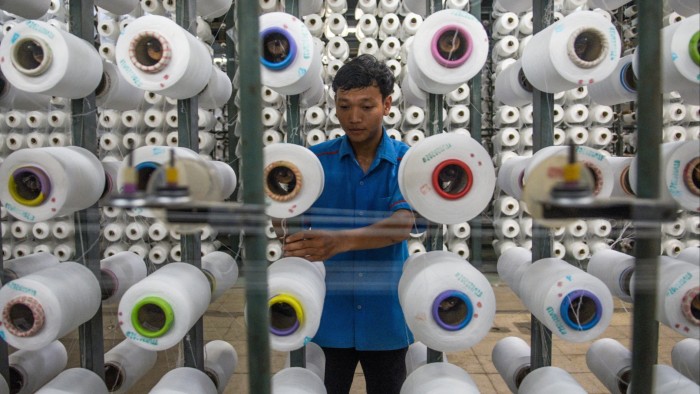Unlock the Editor’s Digest for free
Roula Khalaf, Editor of the FT, selects her favourite stories in this weekly newsletter.
Bankers and consultants have long touted the opportunities of emerging Asia’s rapidly expanding middle classes to their clients. As incomes have risen, foreign direct investment has duly flooded in, fuelling further growth. But in recent years, the momentum behind the Asian consumer has been slowing. The dual economic shocks of the Covid-19 pandemic and Russia’s invasion of Ukraine, which pushed up food and energy prices, hit households’ disposable incomes. Distressed borrowing and a dearth of well-paying jobs hindered the recovery. The White House’s aggressive protectionist agenda will be yet another setback for the region’s export-orientated industrial economies.
Since 2004, developing Asia has added close to 200mn households to its middle class, according to research by Oxford Economics (defined as those with disposable income between $20,000 to $70,000 per year). A significant chunk of that rise has been driven by China and India, the world’s most populous nations. But in both countries, consumers are now struggling. In China, households are still haunted by a real estate crash in 2021, triggered by loose credit and overzealous developers. In India, middle earners have taken on hefty unsecured loans, partly to bridge a rise in the post-pandemic cost of living. Many are now struggling to repay their debt, as the Financial Times reported this week. China and India are also grappling with high youth unemployment.
But the strains on Asia’s new middle classes are broad-based. In Indonesia the number of people considered to be middle class by its government has declined by a fifth over the past six years. Economists reckon the nation’s over-reliance on the commodities sector, which has tended to produce poorly paid work, is partly to blame. In Thailand, the authorities are desperately trying to reduce the burden of household debt which, at around 90 per cent of GDP, is among the highest in the region.
US President Donald Trump’s tariffs plans will also damp revenues and wages across the region. With developing Asia’s comparative advantage lying in low-cost, youthful labour, many countries’ best hope is to negotiate a climbdown from the White House’s now on-hold “reciprocal” tariffs. They will also need to pen new trade deals with other countries to make up for the loss of access to the US. However America’s protectionist plans pan out, the long-term lesson from the series of one-two punches faced by the region over recent years is that governments must do more to boost their nations’ economic resilience.
First, many of Asia’s fast-growing exporters lack adequate social safety nets. This means private debt tends to play a big role in plugging shortfalls. In China, consumers remain cautious, in part because they know there is limited state support should there be another economic shock. That leaves the country’s producers dependent on external demand. Stronger welfare and consumer protection systems would help households bounce back faster and avoid vicious debt cycles emerging. Better education and support for women to enter the formal workforce would also boost households’ earning potential.
Second, many nations have not done enough to diversify their economies to support better-paying jobs. In Indonesia, for example, local content requirements and import restrictions have impeded FDI and the creation of formal jobs beyond the mining industry. Streamlining red tape and investing in better infrastructure would attract further investment and help domestic businesses to scale.
Emerging Asia successfully rode the wave of globalisation that has swept across the world since the 1990s. But as recent global shocks have underscored, the relentless rise of the region’s middle class is not guaranteed. Policymakers will need to play a greater role in ensuring their economies are less hostage to fortune.
